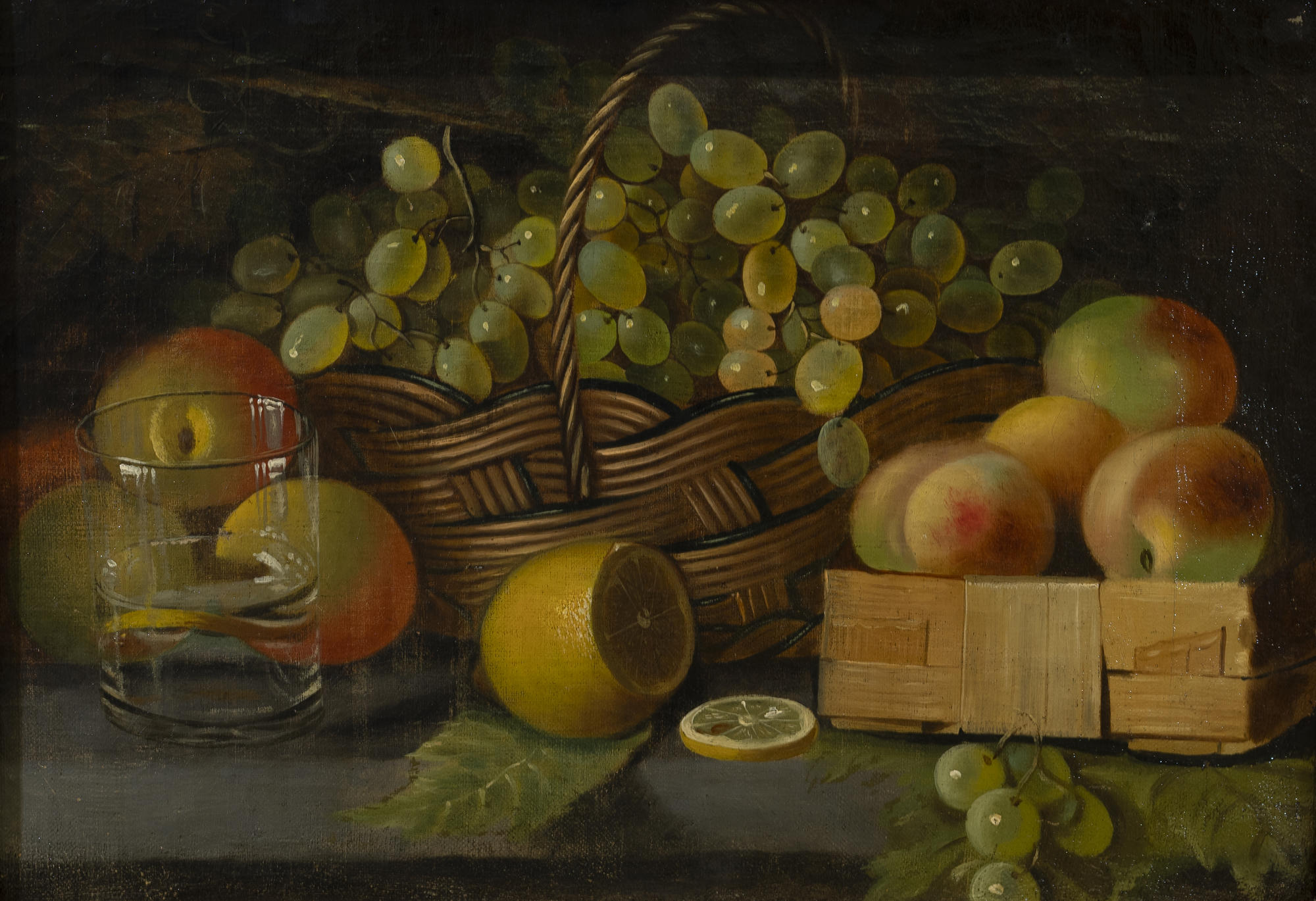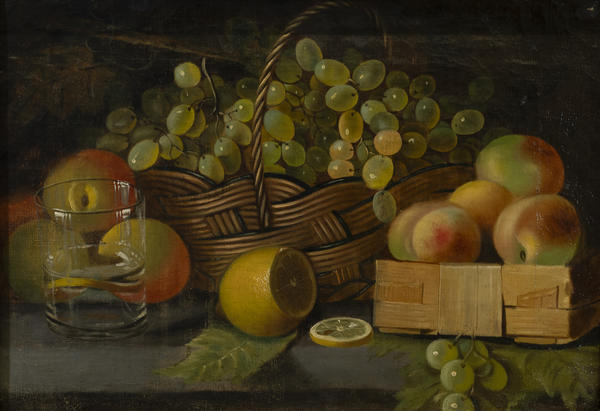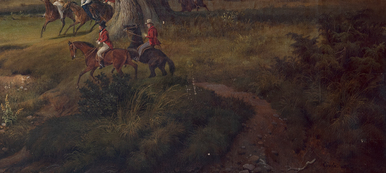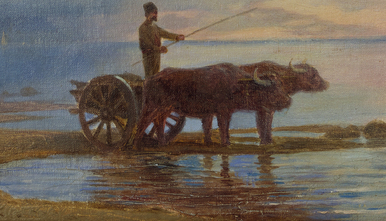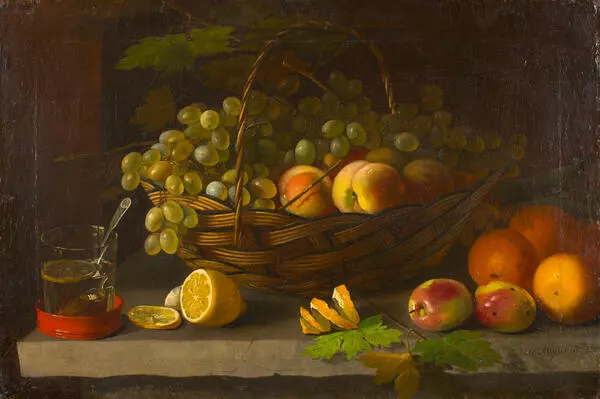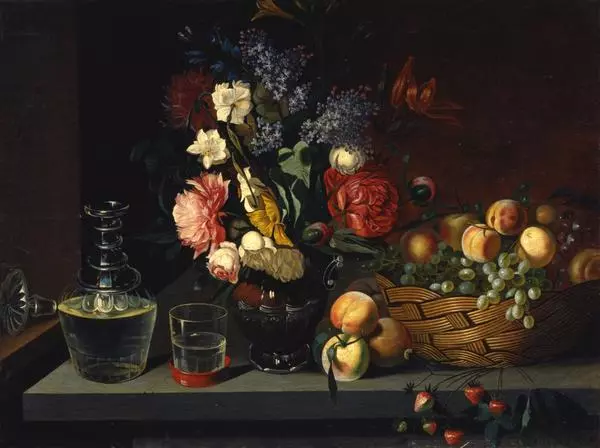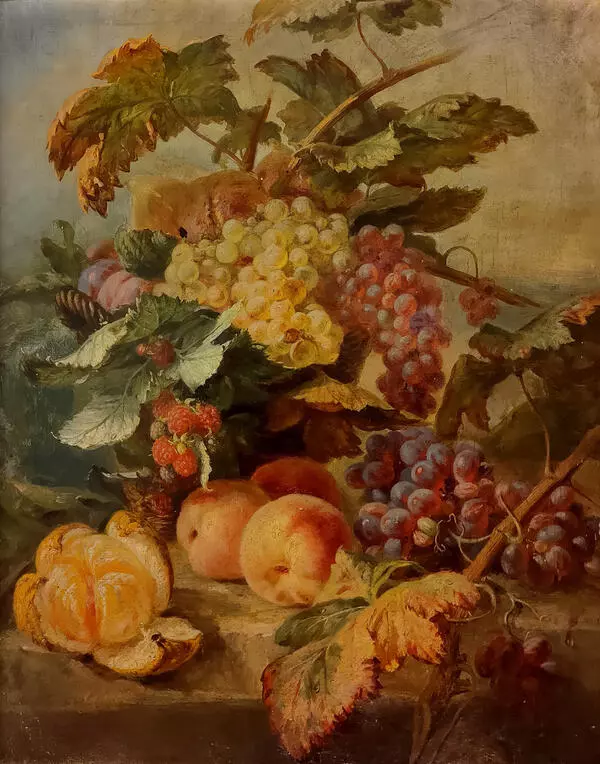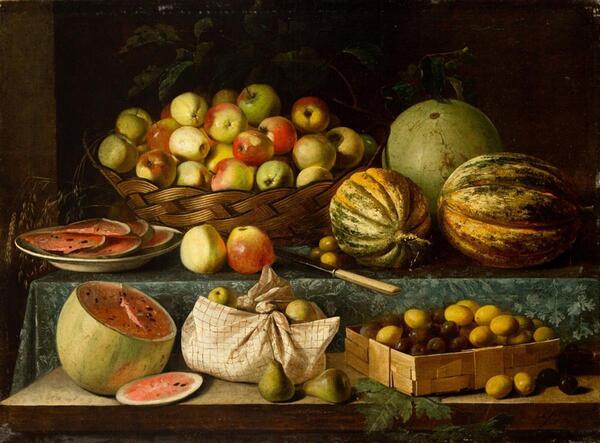Ivan Khrutsky is acknowledged as the founder of Russian classic still life. Khrutsky became famous as ‘a master of flowers and fruits’, and he even received the title of an academician for this genre, which was at the lowest step of the hierarchical staircase of the academic painting. On September 19, 1839, the Board of the Academy of Arts resolved: ‘Grant the title of Academician to painter Ivan Khrutsky, known to the Academy for his remarkable work in portrait, landscape and especially still-life painting’. Khrutsky was working in the environment, where the predominance was given to historical painting. Still life was perceived only as academic study exercise. However, Khrutsky was able to demonstrate with his still life pieces his sophisticated understanding of forms and textures, compositional responsiveness, magnificent knowledge of accurately calculated perspective, virtuosic command of the brush. His devotion to the Dutchmen from the remarkable collection of the Hermitage contributed to this. In 1824, in Saint Petersburg Botanic Garden greenhouse they started growing grapes. Khrutsky was constantly buying it for his compositions despite very high price. According to art experts, grapes in paintings by Khrutsky reflect the impact of Karl Bryullov’s Italian theme. As for lemons, the artist painted them in the manner of Dutch masters.
The items in the painting are oriented parallel to each other, the composition is keenly stage-managed. A cane basket filled with clusters of sappy grapes is right in the centre. Velvety peaches laid in a simple bin made of willow wool are alongside — greengrocers were usually selling fruit in such bins. Glossy surface of apples crops up through the thin glass of water underlining the juiciness of the sliced lemon. Flecks and textures are painted to the very detail. The specifics of this painting is in combination of different, sometimes even opposite textures: sleekness and asperity, transparency and dimness.
The weaved basket and the willow wool bin change over from one painting to another painting of Ivan Khrutsky as his favourite items. His paintings are recognizable because of such permanent things.
The items in the painting are oriented parallel to each other, the composition is keenly stage-managed. A cane basket filled with clusters of sappy grapes is right in the centre. Velvety peaches laid in a simple bin made of willow wool are alongside — greengrocers were usually selling fruit in such bins. Glossy surface of apples crops up through the thin glass of water underlining the juiciness of the sliced lemon. Flecks and textures are painted to the very detail. The specifics of this painting is in combination of different, sometimes even opposite textures: sleekness and asperity, transparency and dimness.
The weaved basket and the willow wool bin change over from one painting to another painting of Ivan Khrutsky as his favourite items. His paintings are recognizable because of such permanent things.
